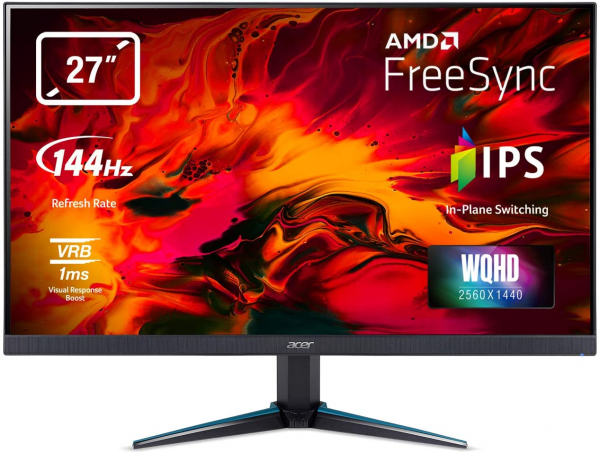Acer
Acer Nitro VG270UP: a 27 "Quad HD 144 Hz IPS monitor well placed
Aprox. 423€
See specificationsWith its 27-inch Quad HD 144 Hz IPS panel, the Acer Nitro VG270UP monitor is clearly aimed at players looking for performance and high definition. And it may well seduce them ...
Positive points
Excellent calibration by default.
FreeSync compatible between 40 and 144 Hz.
Open angles.
Display delay.
VRB backlight scanning system.
Bad points
Limited contrast.
No height adjustment or rotation.
No USB hub.
No cable routing system.
Our review
Presentation
The Acer Nitro VG270UP monitor has a 27-inch IPS mat panel with a Quad HD definition of 2,560 x 1,440 px. Compatible with FreeSync, this model supports a variable refresh rate between 40 and 144 Hz. The manufacturer announces a response time of 1 ms and viewing angles of 178 ° thanks to the use of an IPS panel. Connectivity is relatively limited, but the monitor still has two 2-watt speakers.
This monitor is the competitor of the HP 27xq which is sold at the same price, but which is satisfied with a TN panel with fairly closed angles. Be careful though when buying the Nitro VG270UP since Acer also offers the Nitro VG270 and VG270U monitors which are completely different. The Acer VG270 embeds a TN Full HD 144 Hz panel while the VG270U opts for an IPS Quad HD panel limited to 75 Hz. You must therefore be careful before purchasing!
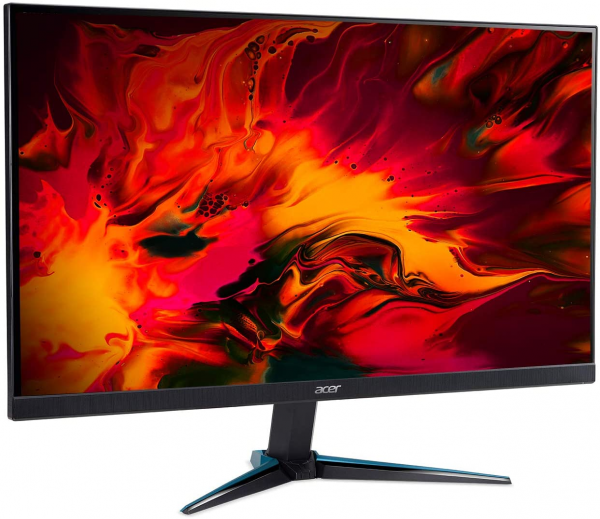
Ergonomics
As the current trend wants, the Acer Nitro VG270UO is discreet. At first glance, nothing suggests a monitor for players and only the touch of blue on the foot suggests a little fantasy. The 27-inch panel has a matt coating which limits annoying reflections.
The back of the monitor is as sober as the front, except for the stand which this time reveals its bluish side. Acer ignores the passage of cables and it will be tricky to collect them at the back of the foot. We can also notice the presence of threads compatible with VESA 100 x 100 mm fixings.
The only ergonomic adjustment offered by this monitor is that of the tilt between -5 ° and + 20 °. Acer does not offer portrait mode, rotation, and even less height adjustment. This last point is far from anecdotal, especially during prolonged use.
The lightweight connection of the Acer Nitro VG270UP offers only two HDMI inputs, a DisplayPort and a headphone output. It still incorporates two 2 W speakers whose quality leaves much to be desired, but which will be used to watch short videos.
Located behind the screen on the right, the joystick provides quick and easy access to all settings. Pressing the button allows you to change the source, mode (presets) and access the settings (brightness, contrast, sharpness, overdrive, gamma, etc.). The joystick is completed by three shortcut buttons. The fourth button is used for power up.
The Acer Nitro VG270UP is at ease on our standard desk of 140 x 60 cm. The 24 cm deep base leaves enough room for the keyboard and mouse. The definition Quad HD on this diagonal of 27 inches allows to benefit from a large workspace in office use, but ultimately has little interest in games, except to benefit from an increased sharpness with this resolution of 109 pixels per inch. We find the Quad HD definition more suitable for a 32-inch model (like the Samsung C32HG70, for example). It may be suitable for those who are close to their monitor and who do not have sufficient distance for a 32-inch model. A last generation mid / high end graphics card is necessary to run the latest games at 144 Hz with the details pushed to the maximum (or almost).
This monitor consumes about 22 W with a white set at 150 cd / m². Relative consumption thus reaches 109 W / m², a value slightly higher than the average of the screens tested (100 W / m²). At the minimum of the brightness (51 cd / m²), the monitor consumes 15 W and goes up to 36 W at the maximum (331 cd / m²).
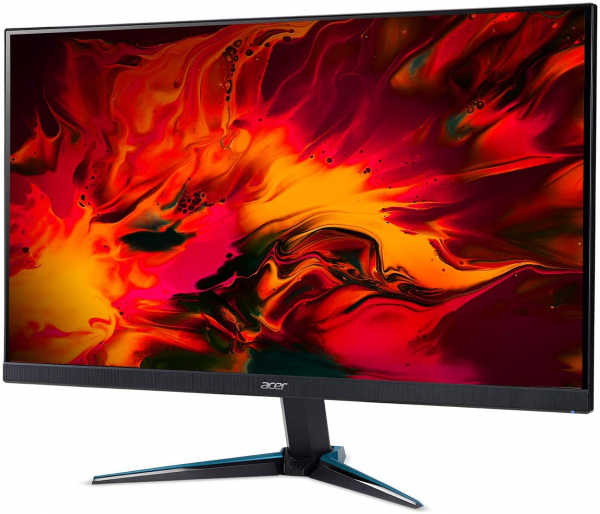
Colors and contrast
Right out of the box, the Acer Nitro VG270UP is perfectly calibrated. We measured an average temperature of 6.340 K, very close to the reference value (6.500 K), with a perfectly stable curve over the entire spectrum. The gamma is of the same ilk, with a perfectly stable curve calibrated on the reference value of 2.2. Finally, the average Delta E is measured at 1.7. Remember that below a Delta E of 3, the human eye no longer perceives the difference between perfect colors and displayed colors. The colors can therefore be considered as true to the source with the exception of bright green, red and yellow whose individual Delta E is greater than 3.
We reduced the brightness to 33 in order to obtain a white close to 150 cd / m² on our test pattern. The image quality remains very close: the temperature is still a little closer to the reference value while the gamma curve drops slightly, but keeps the same average. Finally, the colors lose very slightly in fidelity, but remain generally correct.
Not surprisingly, the calibration of the monitor to the probe does not bring much change and the image retains the same properties - It is therefore unnecessary to offer you a calibration profile for this monitor.
The Acer Nitro VG270UP displays a correct contrast for an IPS model (1 105: 1). It is not the best measured on an IPS panel - since the Philips 276E7 displays a rate of 1200: 1 -, but it remains a good value for an IPS model. In absolute terms, this monitor remains very far from the most contrasting monitors in our comparison, such as the AOC Q3279VWF, the Textorm TX32 or the Philips BDM4037UW which exceed a contrast ratio of 4,000: 1.
The average difference in brightness uniformity is measured at only 6% over the entire 27-inch panel; a benchmark that few monitors achieve. The model we tested was not affected by any clouding phenomenon. Finally, the viewing angles are very open and there is only a slight variation in colors and contrast on the sides.
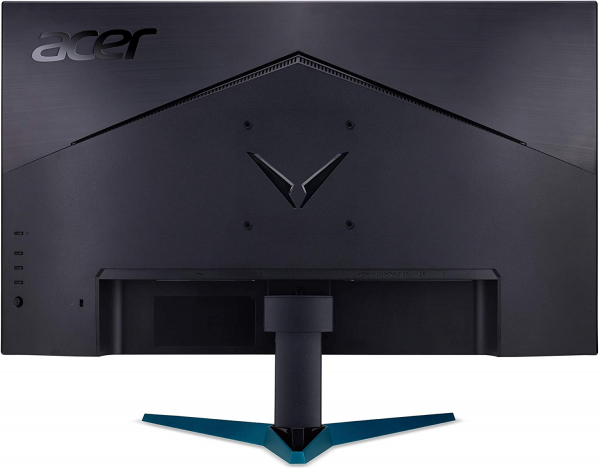
Reactivity
This screen does not use pulse width modulation, PWM for Pulse Width Modulation, in order to adjust its brightness. This modulation varies the intensity of the LEDs cyclically, a phenomenon which is perceived as flickering by certain sensitive people. In some rare cases, PWM can cause eyestrain and headaches. This monitor does not flicker and therefore does not cause these problems.
The Acer Nitro VG270UP is compatible with FreeSync technology which dynamically shifts the screen refresh rate to the number of frames per second produced by the graphics card, in order to avoid the phenomenon of tearing the image (tearing) and micro-slowdowns (stuttering). The frequency range supported is quite wide since the FreeSync works here between 40 and 144 Hz. It is also supported by Nvidia graphics cards which now support FreeSync / AdaptiveSync since the release of the GeForce 417.71 drivers.
Another good surprise is that the Acer Nitro VG270UP monitor has a backlight scanning system called VRB (Visual Response Boost) which is the equivalent of ULMB (Ultra Low Motion Blur) found on G-Sync monitors. The VRB is adjustable in two modes, "Normal" or "Extreme", which improve the sharpness of moving objects. Using it with the overdrive setting to "Extreme" produces excellent results and really improves the image in games. Too bad it is impossible to use VRB with FreeSync and it can only be used at 120 Hz.
We measured an average remanence time of 8.5 ms. It is a good value for an IPS panel and it is also found in other IPS monitors for players, such as the Alienware AW3418DW (8.5 ms) or the AOC Agon AG271QG (8 ms). New VA monitors such as the MSI Optix MAG271CR, the Samsung C32HG70 or the Iiyama G-Master G3266HS manage to drop to 5 ms while displaying better contrast. Finally, the best TN monitors come down to 3 ms, like the Alienware AW2518HF or 3.5 ms for the Acer Predator XB252Q, XB272, and the BenQ Zowie XL2540. This value of 8.5 ms on the Acer Nitro VG270UP is obtained with a setting of the overdrive to "Extreme" without showing a reverse ghosting effect.
We measured the delay on display (input lag) at 9.8 ms. There is therefore no discernible lag between the sending of the image by the graphics card and its display on the screen.
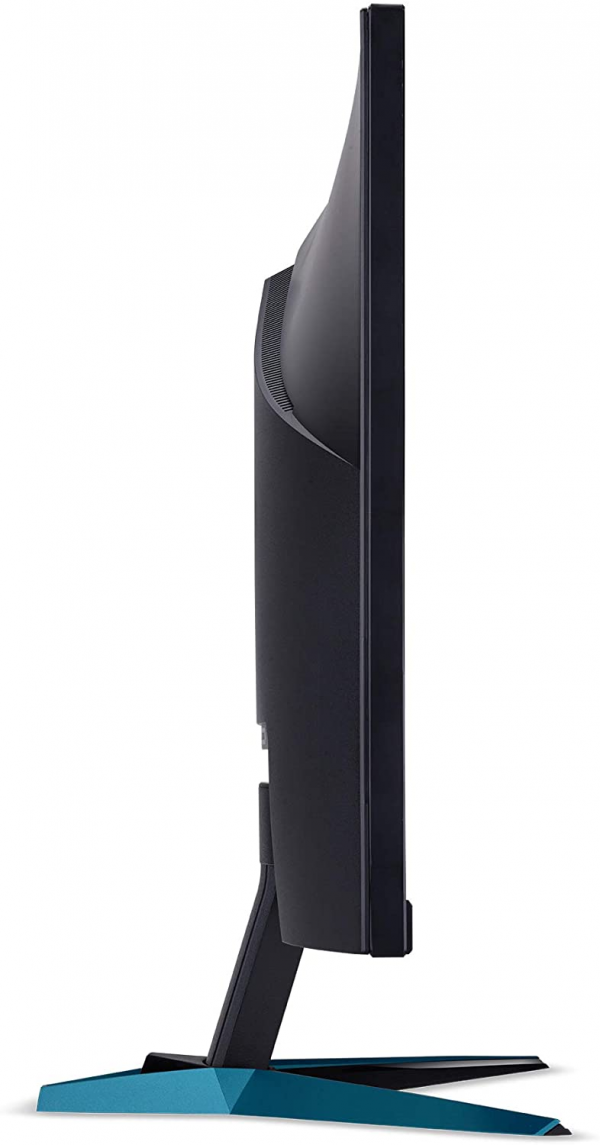
Conclusion
The Acer Nitro VG270UP is a very nice surprise. It displays a perfectly calibrated image, open angles and reduced display delay. The FreeSync compatibility between 40 and 144 Hz is a real plus, but it is especially remarkable for its very efficient backlight scanning system (VRB) which is usually found on much more expensive monitors. Putting aside limited contrast and ergonomics, this monitor is a great choice for gamers looking for performance at a good price.
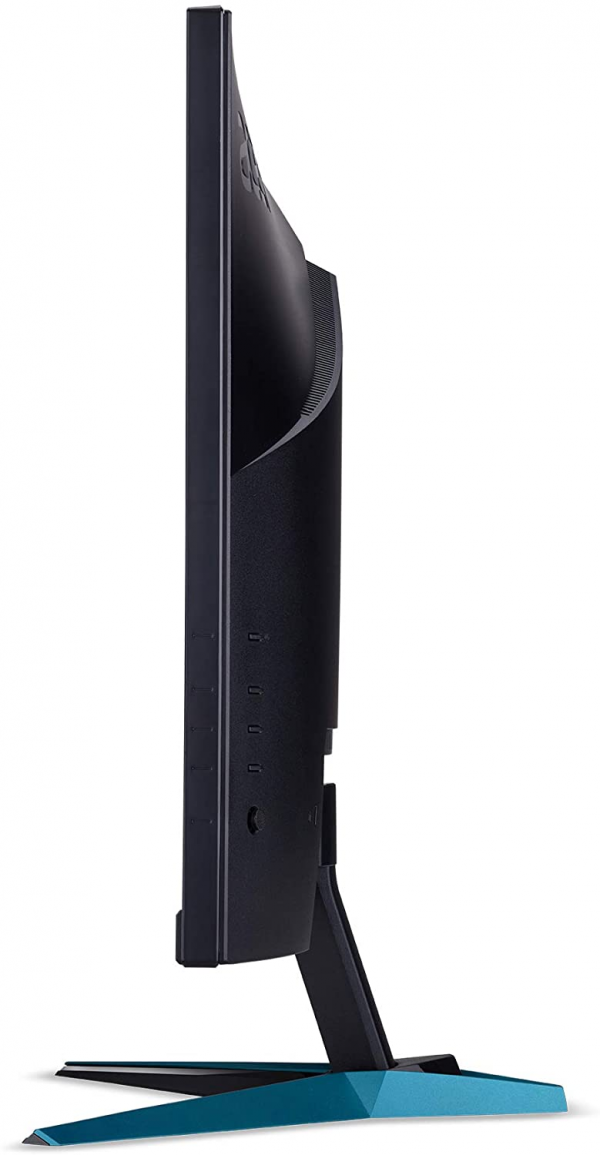
Specifications

